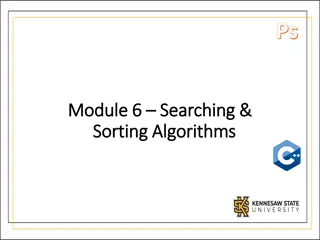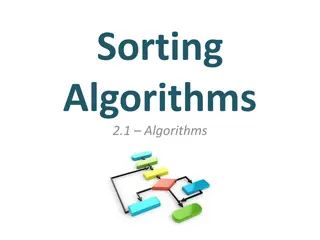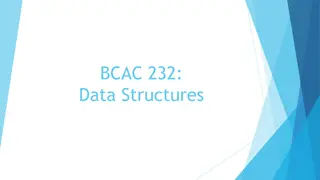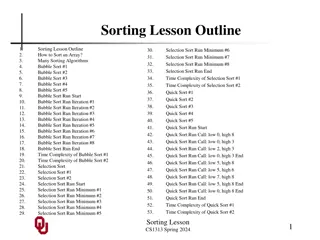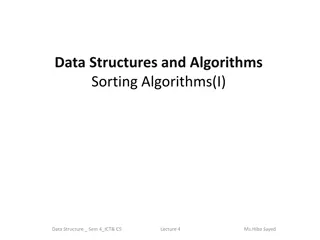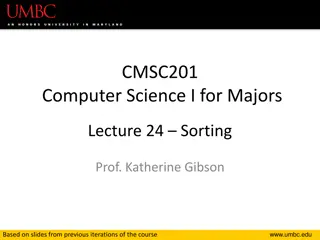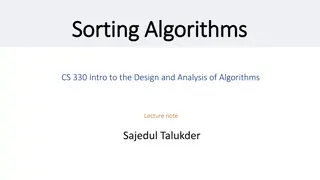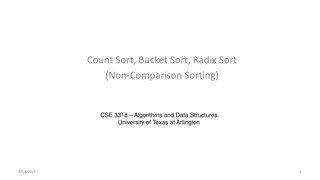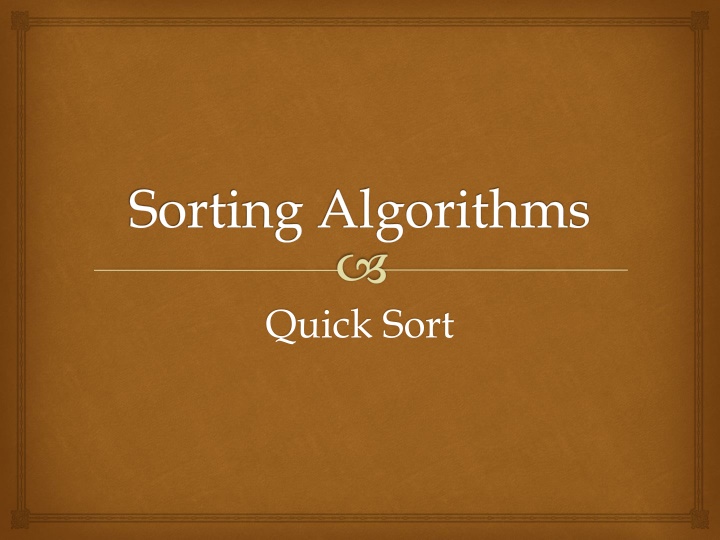
Quick Sort Algorithm: A Divide and Conquer Approach
Quick Sort, a popular sorting algorithm, follows a divide and conquer approach. With various pivot selection strategies, it efficiently partitions arrays, achieving practical speed despite its worst-case complexity. Learn about its key processes and implementation through this comprehensive guide.
Download Presentation

Please find below an Image/Link to download the presentation.
The content on the website is provided AS IS for your information and personal use only. It may not be sold, licensed, or shared on other websites without obtaining consent from the author. If you encounter any issues during the download, it is possible that the publisher has removed the file from their server.
You are allowed to download the files provided on this website for personal or commercial use, subject to the condition that they are used lawfully. All files are the property of their respective owners.
The content on the website is provided AS IS for your information and personal use only. It may not be sold, licensed, or shared on other websites without obtaining consent from the author.
E N D
Presentation Transcript
Sorting Algorithms Quick Sort
Quick Sort Like Merge Sort, QuickSort is a Divide and Conquer algorithm. It picks an element as pivot and partitions the given array around the picked pivot. There are many different versions of quickSort that pick pivot in different ways. 1) Always pick first element as pivot. 2) Always pick last element as pivot (implemented below) 3) Pick a random element as pivot. 4) Pick median as pivot.
Definition cont. The key process in quickSort is partition(). Target of partitions is, given an array and an element x of array as pivot, put x at its correct position in sorted array and put all smaller elements (smaller than x) before x, and put all greater elements (greater than x) after x. All this should be done in linear time.
Partition Algorithm There can be many ways to do partition The logic is simple: start from the leftmost element and keep track of index of smaller (or equal to) elements as i. While traversing, if we find a smaller element, we swap current element with arr[i]. Otherwise we ignore current element.
Quick Sort Program #include<iostream> using namespace std; void swap(int*, int*); int partition (int [], int, int); void quickSort(int [], int, int); void quickSort(int arr[], int l, int h) { if (l < h) { int p = partition(arr, l, h); quickSort(arr, l, p - 1); quickSort(arr, p + 1, h); } } int const n=5; int arr[n]; void main() { for(int i = 0; i < n; i++) cin>>arr[i]; quickSort(arr, 0, n-1); for(int i = 0; i < n; i++) cout << arr[i] << "\t"; cout << endl; system("pause"); }
Quick Sort Program int partition (int arr[], int l, int h) { int x = arr[h]; int i = (l - 1); for (int j = l; j <= h- 1; j++) { if (arr[j] <= x) { i++; swap(arr[i], arr[j]); } } swap(arr[i + 1], arr[h]); return (i + 1); } void swap(int* a, int* b) { int t = *a; *a = *b; *b = t; }
Usage Although the worst case time complexity of QuickSort is O(n2) which is more than many other sorting algorithms like Merge Sort and Heap Sort, QuickSort is faster in practice, because its inner loop can be efficiently implemented on most architectures, and in most real-world data. QuickSort can be implemented in different ways by changing the choice of pivot, so that the worst case rarely occurs for a given type of data. However, merge sort is generally considered better when data is huge and stored in external storage.


